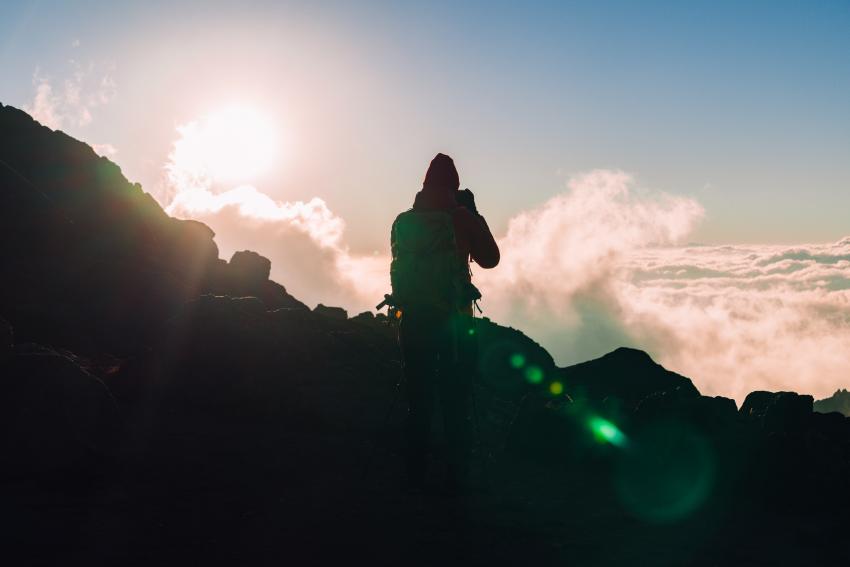Africa’s highest mountain rises to 4,900 metres above the plains of northeastern Tanzania, topped by the dormant volcanic cones of "Kibo", "Mawenzi" and “Shira”. Aside from being an iconic natural landmark, trekking to Mount Kilimanjaro’s summit has become a bucket list item for many travellers and an adventure that's often added to a Tanzania safari package.

But rather than there being a single route up the mountain, there are actually multiple options for trekkers to choose from, each with their own advantages and disadvantages. So to help you decide which route is best for you, we’ve put together a guide for planning your Mount Kilimanjaro safari, including a few tips to ensure you’re in the best physical condition to reach the summit.
Marangu Route (5 days/4 nights)

If you’re short on time, then the Marangu Route is a good option as it can be completed in as little as five days. It’s easily accessible and has a relatively gentle ascent, as well as comfortable hut facilities along the way that makes it ideal for people who don’t want to “rough it” in tents. However, the Marangu Route ascends and descends along the same trail, so there is little variety in scenery for trekkers to experience.
One of the main disadvantages of the Marangu Route is that it’s become incredibly popular, with around 70% of trekkers opting for this route, and the trail (which has been nicknamed the “Coca Cola Route”) can get very crowded. Because of the reduced costs of hiring camping equipment and porters, it’s popular with budget travellers and those who are more focused on reaching the summit than the overall trekking experience. Associated with this is people trying to rush to the top in as little time as possible, with many succumbing to altitude sickness as they push their bodies beyond their limits.
Machame Route (7 days/6 nights)

If you’ve got an extra couple of days on your Kenya/Tanzania safari, then it’s well worth opting for the Machame Route instead of the Marangu, with many people trekking this route to escape the crowds. It offers easier acclimatisation thanks to the 6 or 7 days that most trekkers allow and the different ascent and descent trails take you through a wide variety of stunning ecosystems. The trailhead is accessed on the western side of Mount Kilimanjaro and not far from a tarmac road, offering convenient transport connections to the Arusha and Kilimanjaro International Airport.
The Machame Route has garnered a reputation as one of Mount Kilimanjaro’s most scenic wilderness routes but the steep and challenging terrain only allows for camping. While this might deter some trekkers, the camps before and after the summit along the Machame Route are actually lower in altitude than those along the Marangu trek, which can significantly reduce the risk of altitude sickness and give you a better chance of reaching the summit. You’ll also be camping exclusively with your team of guides and porters (rather than crowded huts with other trekking groups), although the cost of porters required to carry equipment up the mountain does add to the price.
Rongai Route (6 days/5 nights)

Experienced mountaineers who are accustomed to trekking at high altitudes might want to consider the Rongai Route, which ascends Mount Kilimanjaro from the northeast. The trail is blissfully crowd-free and takes you through breathtakingly beautiful wilderness areas while offering sweeping views across Amboseli and Tsavo National Parks.
While the ascent is relatively gentle for much of the route, the final stretch to the summit is quite tough and with poor acclimatisation opportunities, which is why it’s only suitable for experienced trekkers. The cost of trekking the Rongai Route will also set you back a few more dollars due to the number of porters required to carry camping equipment up the mountain.
The only other downside of the Rongai Route is that the trailhead is quite remote and requires a four-hour drive around the base of the mountain to access. There’s no park office here, so you’ll need to make sure your fees have been paid in Marangu before setting out.
Lemosho Route (7 days/6 nights)

Almost identical to the Shira Route, the Lemosho Route is a slightly enhanced trail that is varied and spectacular, with a lower altitude starting point for easier acclimatisation. It has a steady ascent from the Lemosho Glades passed dramatic gorges to Shira’s plateau, which affords exceptional panoramas of Mount Meru and the Masai Steppe. The Lemosho Route takes you through a remote and untouched region along the western slopes of Mount Kilimanjaro before merging with the Machame Route on the fourth day of trekking.
It’s ideal trekkers who want to escape the crowds and are happy to camp out, with the opportunity to spot a variety of animals along the way. The final night is spent camping close to the crater, which means a less strenuous final ascent and not having to leave the camp at midnight for a sunrise summit. If time isn’t of the essence, you can spend an extra day on the plateau doing short, acclimatisation walks or some technical climbing up the Shira Needles before tackling the summit.
The downsides of the Lemosho Route are that it is more strenuous than other routes and additional charges are imposed at the Crater Camp to keep numbers down. If you’re trekking during the winter months of June and July, it’s important to note that snow levels can be high and crampons may be required, particularly if you’re taking the Western Breach Route to the summit.
Umbwe Route (6 days/5 nights)

With a reputation as the most challenging trail up Mount Kilimanjaro, the Umbwe Route follows a steep and short trail along the Western Breach, passing a number of caves en route. The fast ascent to high altitude means there’s little opportunity to acclimatise and many trekkers succumb to altitude sickness and never reach the summit.
But for strong hikers who are accustomed to acclimatising quickly, it offers crowd-free trails, traversing beneath Kilimanjaro's Southern Ice Field on what’s known as the Southern Circuit. The Umbwe Route summits from Barafu before the descent is made via the Mweka Route, which is the same descent used along the Machame, Lemosho and Rongai routes.
Know your abilities
Trekking Mount Kilimanjaro is no small feat, with the challenging conditions and high altitude resulting in many succumbing to altitude sickness. The key to a successful summit is knowing your own abilities and fitness levels and selecting a route that won’t push you beyond what your body is capable of.
You need to be comfortable walking for multiple days with a day pack, so it’s important to build up your endurance before departing for your Tanzania safari holiday. In the weeks and months leading up to your trek, get in as much trekking training as you can, preferably in mountainous regions that are at altitude. If possible, extend your treks overnight to get your body accustomed to walking for long hours over successive days and be mentally prepared for the adventure ahead.

Trekking Mount Kilimanjaro requires significant cost and effort, so you want to give yourself the best chance of reaching the summit while also enjoying the journey along the way. Ensure you allow adequate time to shake off any jet lag before embarking on your trek and are in a positive mindset about your ability to succeed.
Planning a private safari in Tanzania with a Mount Kilimanjaro trek? Check out our selection of luxury lodges and camps to help you craft the best safari in Africa.

 1-321-766-6821
1-321-766-6821 









